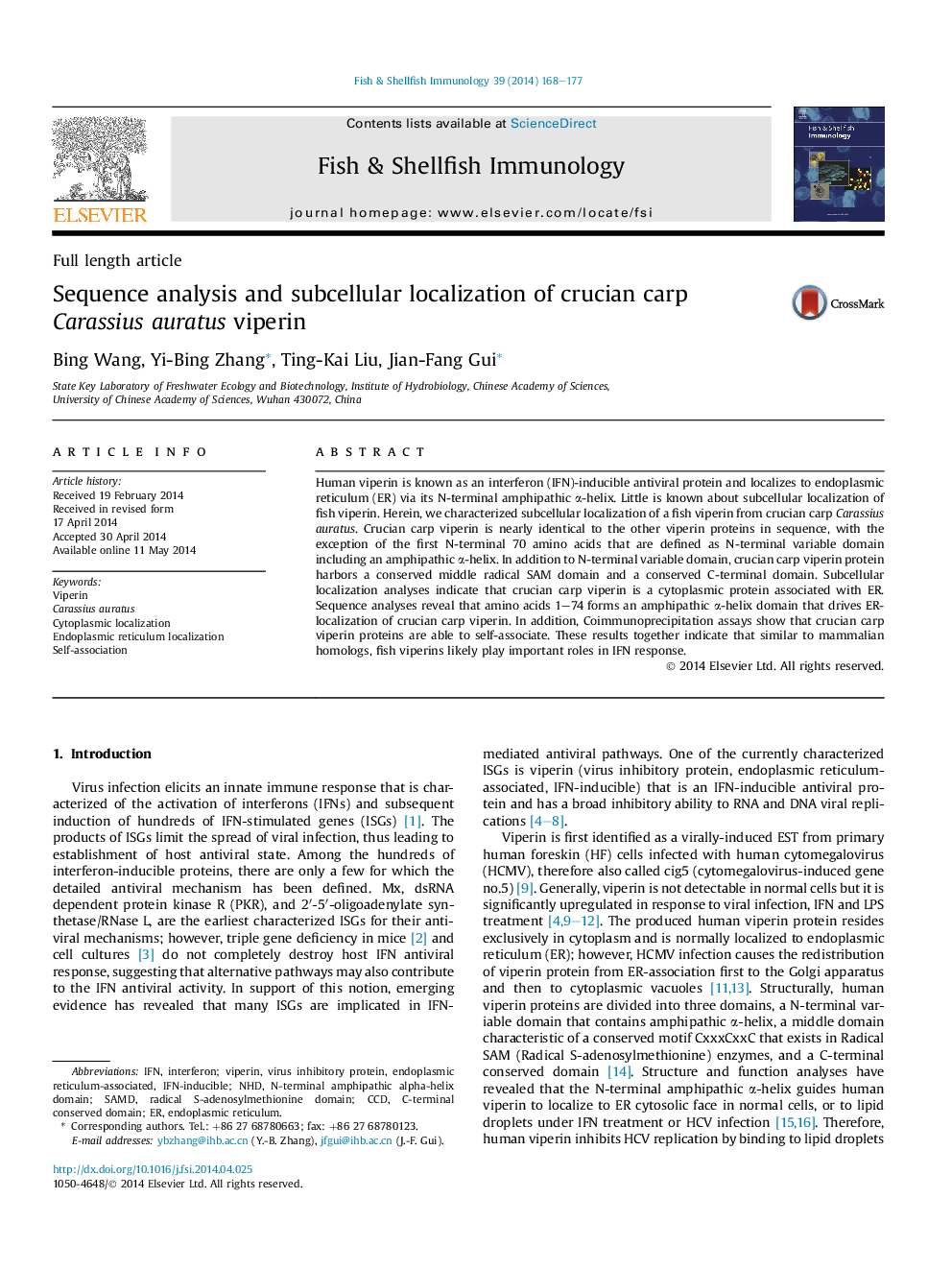| کد مقاله | کد نشریه | سال انتشار | مقاله انگلیسی | نسخه تمام متن |
|---|---|---|---|---|
| 2431575 | 1106764 | 2014 | 10 صفحه PDF | دانلود رایگان |

• Mammalian viperin and fish viperin protein sequences are compared and analyzed.
• The N-terminal amino acid 1–74 of crucian carp viperin forms an amphipathic α-helix domain.
• Crucian carp viperin is expressed in cytoplasm.
• The N-terminal amphipathic α-helix drives ER-localization of crucian carp viperin.
Human viperin is known as an interferon (IFN)-inducible antiviral protein and localizes to endoplasmic reticulum (ER) via its N-terminal amphipathic α-helix. Little is known about subcellular localization of fish viperin. Herein, we characterized subcellular localization of a fish viperin from crucian carp Carassius auratus. Crucian carp viperin is nearly identical to the other viperin proteins in sequence, with the exception of the first N-terminal 70 amino acids that are defined as N-terminal variable domain including an amphipathic α-helix. In addition to N-terminal variable domain, crucian carp viperin protein harbors a conserved middle radical SAM domain and a conserved C-terminal domain. Subcellular localization analyses indicate that crucian carp viperin is a cytoplasmic protein associated with ER. Sequence analyses reveal that amino acids 1–74 forms an amphipathic α-helix domain that drives ER-localization of crucian carp viperin. In addition, Coimmunoprecipitation assays show that crucian carp viperin proteins are able to self-associate. These results together indicate that similar to mammalian homologs, fish viperins likely play important roles in IFN response.
Journal: Fish & Shellfish Immunology - Volume 39, Issue 2, August 2014, Pages 168–177